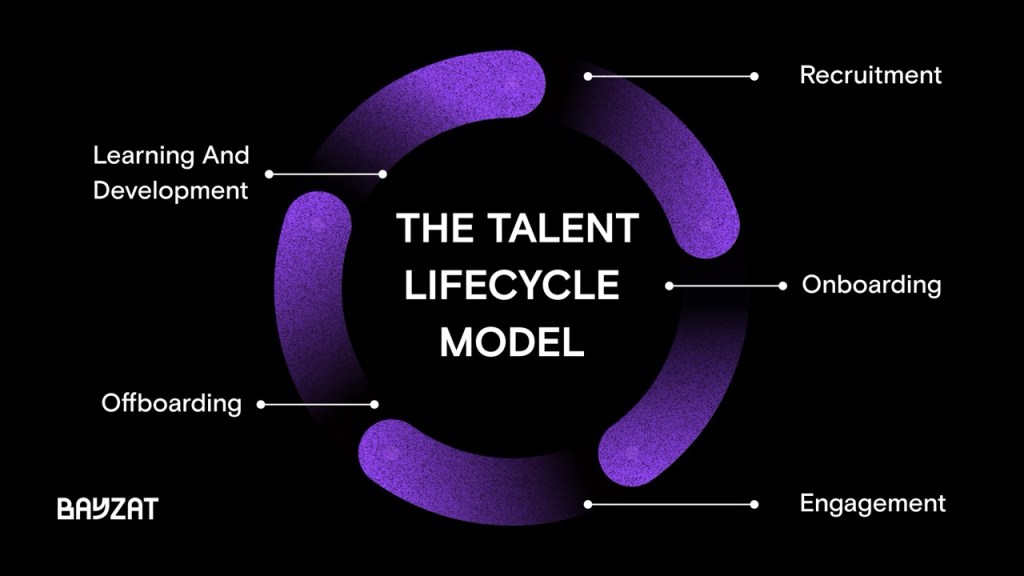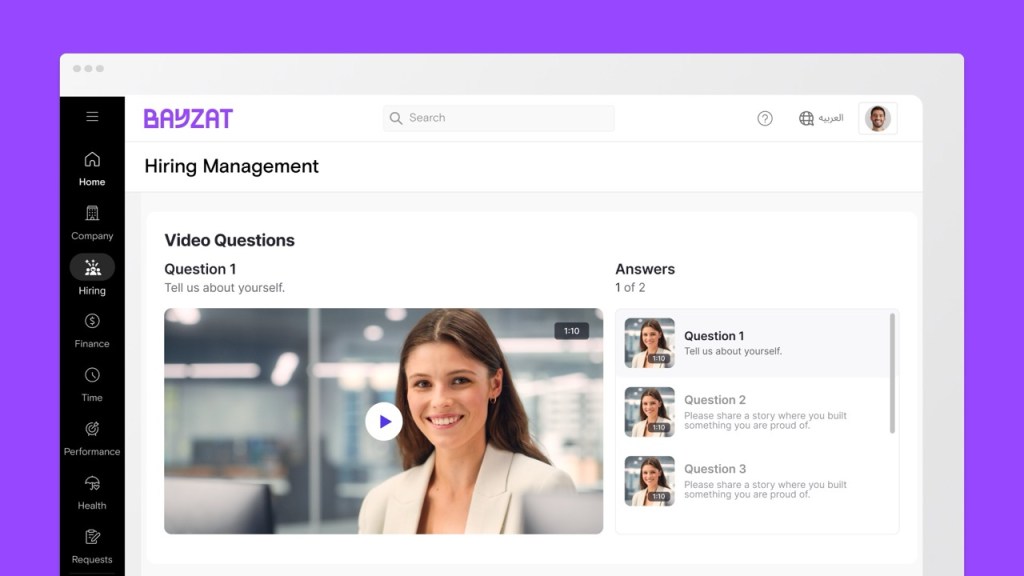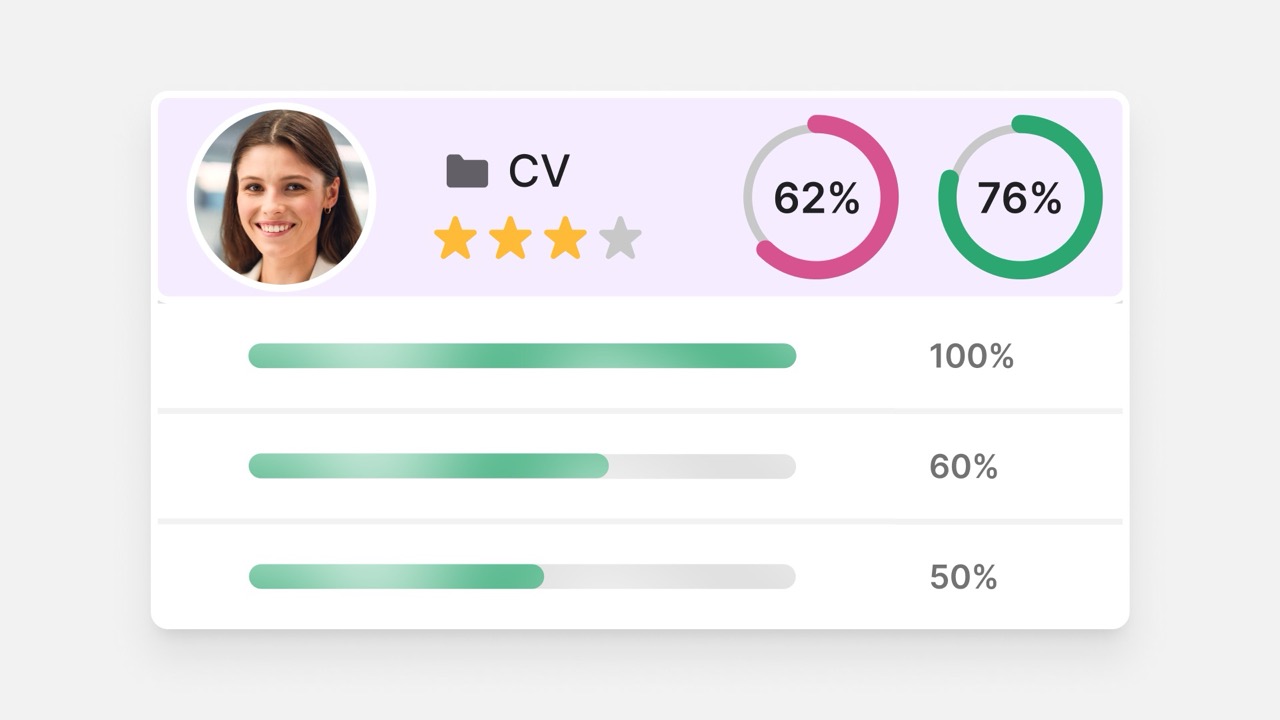A company hoping to succeed must have properly mapped out goals and the right talents to achieve them. This particular reason is why businesses must prioritize proper employee management by exploiting the talent lifecycle model for longevity and development.
The talent management lifecycle covers how companies perform talent recruitment, orientation, engagement, development, and offboarding. This model is a delicate part of any organization’s human resources department, as workers are the major determinants of whether a business succeeds or fails.
This guide looks into this special model, its 5 major stages, and how HR managers can use the information to enhance organization-talent relationships such that the former achieves its goal without shortchanging the latter.
What is the Talent Lifecycle?

The talent lifecycle is a professional term describing the five formal progressions of an employee’s lifespan in a company. These five stages include;
- Recruitment– Hiring the employee
- Onboarding – Specifying the employee role and providing all necessary info they need
- Engagement – Imbibing the company culture into the employees and making them feel like part of the community
- Learning and Development – Equipping the employees with development skills and training for more effectiveness.
- Offboarding – The final stage of the employee cycle and the moment of decision for the company to either terminate their contract or continue with them.
In an optimal world, an employee naturally completes all five cycles, lasting decades with one company. However, in reality, many employed talents barely reach stage three before quitting for greener pastures or other reasons. An exposition by Indeed confirmed up to 4.5 million resignations globally for every month of 2022 up until September. The same column highlighted that 47% of Gen-Z talents and 66% of millennial workers were likely to quit their current jobs for higher-paying offers.
It is easy to conclude that the resignation problem is due to an unchecked sense of entitlement from modern-day employees, but this is often not the case. An in-depth look into the global industry actually points the finger at employers. The grim reality is that many HR departments consistently fail to provide talents with a sense of security and belonging. Also, most HR managers are so focused on recruiting talents with the right skills that they fall into the trap of employing people with poor ethics. A more disturbing fact is companies totally sidelining the talent lifecycle practice and suffering the consequence of mass resignations.
Modern workplace trends easily confirm that finding and keeping the right talents takes more than paychecks. Enjoying a stable employee catalog requires HR departments to consider all 5 major stages of the talent management lifecycle at all times.
We look in-depth into these five progressions, highlighting how HR departments can conduct each one, including essential tips and factors they must consider.
Recruitment
This initial hiring stage is extremely important because it involves dissecting different applications to find the right employee willing to embrace the company culture. The primary metric here should not just be about talents and professional capabilities. It is essential for HR to set up many personality metrics to help rate each candidate’s commitment levels and long-term intentions.
The objective is to pick qualified employees with innate intentions to stick with the company in the long run. Those who seem mainly focused on remunerations should get lesser priority, irrespective of their qualification, except the role will not impact the long-term objective of the firm. It is important to schedule at least one in-person interview during recruitment, allowing applicants to express themselves. Expert HR recruiters can pick cues from these interviews and determine the best fit for roles.
One way HR can find the right talents is to promote their brand to the right targets. They may showcase their openings via Website promotion, direct recruitment, and job board postings, all of which can draw applications from far and wide. The recruiters can then use AI-enabled ATS solutions to pick the best matches based on defined metrics and schedule interviews.
HR Pro Tips at the Recruitment Stage:
- Ensure to properly outline all the positives of working with the company. Remunerations should not be the only benefit for employees.
- Be very objective during the application screening and interview process.
Onboarding
After selecting and hiring an employee, creating a positive impression on them is important. Hence, positive onboarding is a priority as it will leave most talents dreaming of building a long-term career with the hiring company. The onboarding process includes introducing new hires to their roles, teams, and expected contributions. A good firm must at least organize a mini-orientation that helps new talents know the locations of every important department and facility. They should also be briefed on meeting schedules and the people to contact for specific situations.
The onboarding process is also the perfect time to discuss employees’ salary packages, including possible increases over time. HR managers and companies should always look out for employees’ behavior after orientation and onboarding to see if the process was indeed effective.
HR Pro Tips at the Onboarding Stage:
- There must be a formal, deliberate onboarding process. The stage should be well planned and not be an afterthought as it could be the make-or-break moment for an employee to decide if the company will be their future.
- Companies should have employee benefits packages to inspire talents and communicate these during onboarding. Insurance and paid leave are great motivators.
- HR should conduct surveys that allow new hires to drop feedback on their onboarding process and its effectiveness. The results can help them create more efficient and effective processes.
Engagement
Engaging employees is one of the tricky aspects of the talent lifecycle that many HRs and companies get wrong. Keeping talents engaged goes far beyond assigning tasks and roles to them. That is the easy part. The more critical factor is the ability to imbibe the organization’s culture in them so that they pursue every objective, like their personal goals.
To achieve such a level of commitment, the company must acknowledge each talent contribution and recognize those who perform outstandingly well as exemplary models. However, the HR team must not be too overzealous and risk promoting a toxic, unhealthy workplace. Hence, it is important to reach a fine balance. Understanding each employee’s personality and triggers can help promote a competitive yet healthy, empathetic environment.
A University of Oxford research on employee engagement confirmed that talents are 12% more productive when happy. Hence proper engagement is quite vital to sustaining hardworking employees. So, the HR department should not be shy to organize office parties, seminars, happy hours, mini sports competitions, and occasional food dates.
HR Pro Tips at the Engagement Stage
- Listen more to employee feedback on their feelings about working with the company.
- Be proactive and organize personal interviews that help you know what each talent appreciates.
- Hold scheduled meetings that center around employees and the company objectives.
Learning and Development
Trends come and go due to the continuous evolution of technology and industrialization of the labour market. Hence, it is often expedient to organize training for workers to update their skill set and knowledge to function for the company’s benefit effectively. No real organization that hopes to compete in the highly saturated UAE market will limit its talents. Meetings, workshops and sponsored training must be organized regularly to have talents at their best.
Employees who enjoy updated training from employers see themselves as valuable assets and are often satisfied with their jobs. Such workshops give them a sense of security, which many talents desire above big paychecks. Hence HR managers should not underestimate the need to teach and update the skills of employed workers. Deliberately limiting their talents will make resignations, layoffs, and discontent more paramount. Also, top job seekers often find companies that train and promote in-house talents attractive. They are more likely to flock to such firms than those that regularly lay off employees.
HR Pro Tips at the Learning and Development Stage
- Make training and continuous workshops for employees a need.
- Every training must align with the organization’s overall objective.
Offboarding and Outreach
Offboarding is the final stage of the talent cycle and brings the employer to a crossroads regarding the next step for the employee who has spent decades working and growing. The firm typically considers if it can improve the talent’s efficiency and effectiveness, which has been declining due to aging or other natural factors. If such improvement will prove too costly or downright impossible, then the firm will move to offboard the talent.
Most firms who have come so far with their employees are typically expected to close the chapter with a very good impression. Hence, an expert HR manager must handle communications and other formalities with utmost empathy. They must make the employee feel valued and support them into post-retirement life. It is important that they allow the employee a window to process the situation and gradually hand over all necessary paperwork and tools where necessary.
Companies may also set up an alum board for their retired staff, a great way to establish an empathetic public brand and reputation.
When planning to offboard a talent, the firm is expected to have a replacement. In-house promotions are often the best way to go as long as the company has prepared for such a transition. Outreach and hiring new talents can be an alternative option.
HR Pro Tips at the Offboarding and Outreach Stage
- Set up a formal succession plan while planning offboarding.
- Top companies must set up an alum board to show that they value continuity and appreciate their talents.
- The HR department must be answerable to the retiring talent, providing support as the latter transition.
Bayzat’s Role in Promoting the Talent Lifecycle Model in the UAE
To get and retain the best employees, a company must be willing to activate the five stages of the talent lifecycle. Each is highly important as they make talent management easier, keeping workers connected to a firm’s long-term goals. The model also helps organizations build a strong pro-worker reputation, making it a hot spot for the best UAE talents.
However, it is obvious that establishing the model to its full capacity can be quite the work, especially for firms new to the practice. They will need the right HR personnel and may have to reevaluate their entire workforce and possible reforms to have everyone functioning at their best. The good news is that the whole implementation process can be much easier when companies work with experienced HR teams well versed in the lifecycle model. Bayzat is an expert HR firm that understands and customizes the talent lifecycle model to fit different company needs.

Bayzat employs highly advanced systems and solutions to help UAE businesses attract and maintain an exceptional workforce. The company’s All-in-one software offers business special packages to care for their employees and maximize their potential. Bayzat is currently open to collaboration with organizations in the UAE that want an established iron-clad talent lifecycle model to attract and sustain the best talents. From super ATS recruitment solutions to employee welfare packages and performance trackers, this firm has it all. Visit the official website or place a call to discover and access its offerings.
An integrated platform for HR Management and payroll in the UAE
The Bayzat platform enables you to automate HR management, Payroll and insurance All the way through the employee life cycle. We deliver a world-class employee experience.
Get BayzatFAQs
What is the Talent Management Lifecycle?
The Talent lifecycle is a model that tracks the start of an employee’s career in a company right to the end. It involves 5 main progressive stages that, if maximized, bond the employee to the company, leading to a satisfying experience for both. The five stages are recruitment, onboarding, engagement, learning/development, and offboarding.
Should Companies Focus on the Talent Lifecycle Model?
It is highly important for companies hoping to attract the best talents to understand and maximize the talent lifecycle model. The system promotes company culture among employees, making them highly effective and satisfied with their positions.
Why is the Talent Lifecycle Model Important for HR?
An HR department focusing on the talent management lifecycle model will handle employee issues much better. This achievement will heavily reduce resignations issues, promote healthy relations in the workplace and help the company achieve its goals while saving money.








Get Social